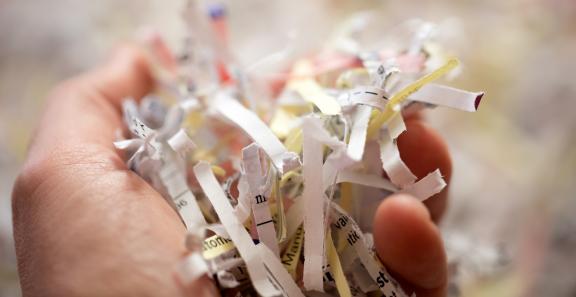Disposing of Records Containing Personal Information

Posted: July 15 2019
Almost everyone has records containing personal information (Social Security number, financial information, medical history, etc.) around their home. You can help protect yourself from identity theft by properly destroying your old paper and digital records when you no longer need them.
Shred Paper Records
Paper records containing personal and sensitive information should be shredded with a cross-cut, diamond-cut or confetti-cut paper shredder (strip-cut pieces can be put back together).
If you have a very large amount of paper to shred, consider taking it to a shredding facility or using a service that certifies your documents are fully destroyed. While there's usually a fee for these services, some communities, credit unions and office supply stores will offer free shredding periodically.
Destroy Digital Records
Destroying digital records can be tricky since deleting a file doesn’t actually remove the data (just prevents you from accessing it). So even if you empty your computer’s trash, the data can still be there and be retrieved.
Computer
Before recycling or selling your computer, make sure you’ve successfully destroyed all your personal files. You can use specialized software to permanently remove specific files or delete your entire hard drive. You can also physically destroy your hard drive before taking it to an electronics recycling center.
Phone/Tablet
While every phone/tablet is different, the general process is the same.
- Remove the memory and SIM cards (if present).
- Physically destroy them both (unless you intend to reuse them).
- Go to your device’s settings.
- Find and select the master reset/wipe memory/erase all content and settings feature.
Portable Storage
For flash/thumb drives and portable hard drives, use the same destruction methods as you would a computer. CDs/DVDs should be physically broken/shredded. For older media formats like floppy disks and tapes, remove the film and cut it into small pieces.
Cloud/Remote Storage
Contact your service provider and ask them about their data destruction policies and process.